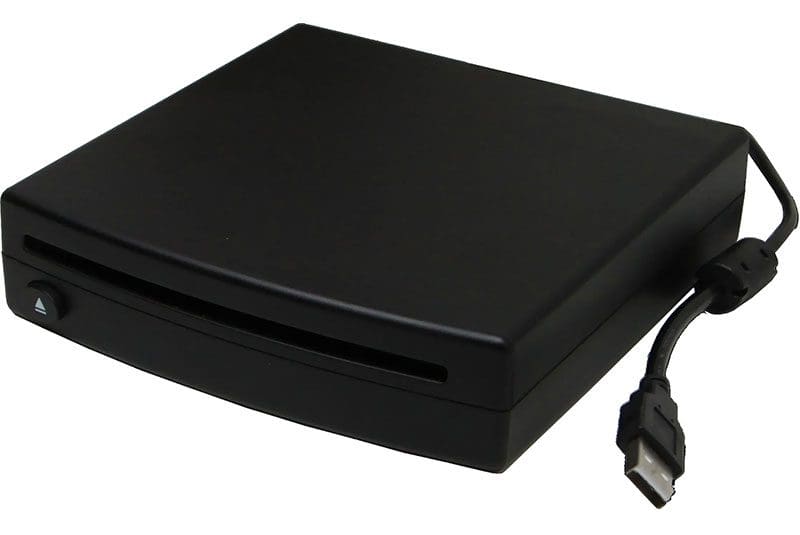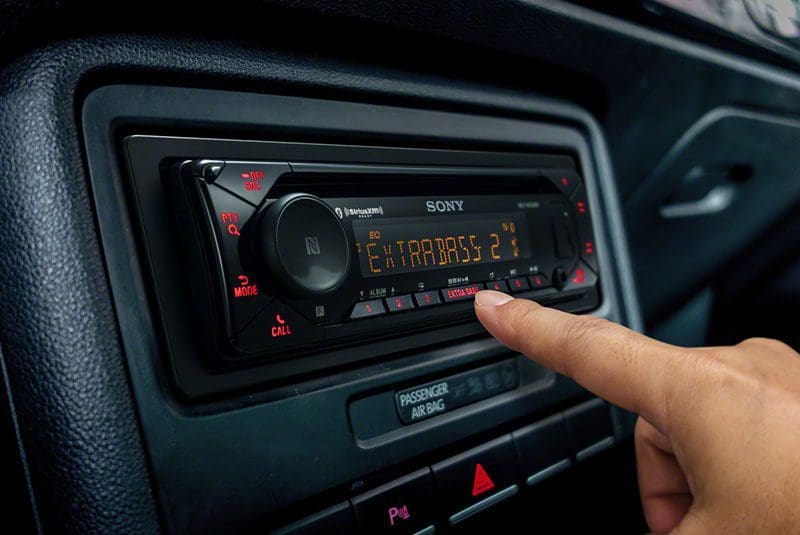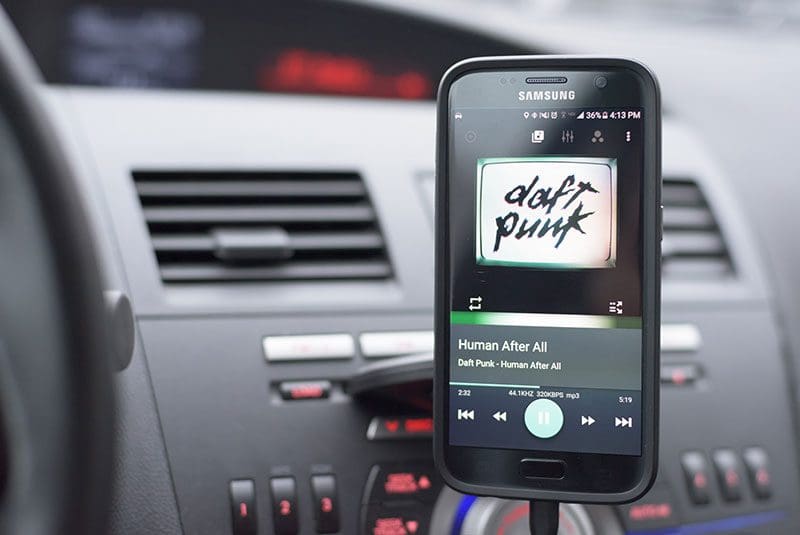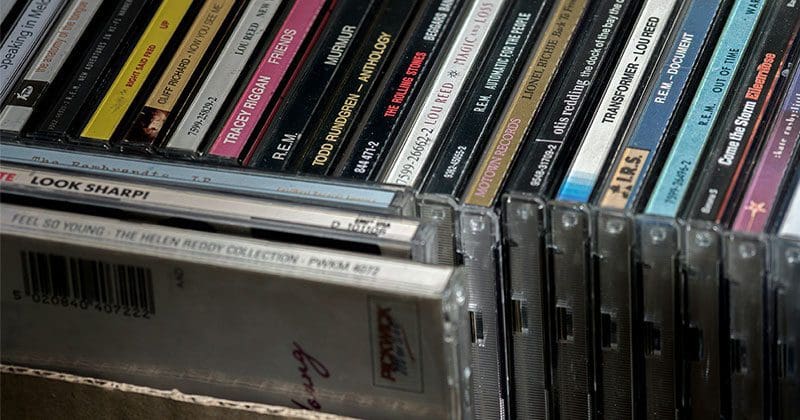Since 1982, the digital audio compact disc has been the medium of choice for music enthusiasts who wanted to purchase high-quality albums of their favorite artists’ latest creations. Co-developed by Phillips and Sony, the 4.7-inch CD stores an amazingly accurate copy of the original recording in a portable and durable medium. Sadly, times have changed, and just like the vinyl album and cassette that came before, the compact disc is all but dead. Let’s look at how this has affected listening to music while behind the wheel.
Where’d the CD Slot Go?
If you’ve purchased a new car, truck or SUV in the last few years, then you’ll know that very few of them include a compact disc player. This mechanical playback mechanism and its ubiquitous felt-lined slot in the dash have given way to a USB port. Automakers expect you to have your music collection on your phone or stored on a USB memory stick. They’ve also assumed that those of you using a memory stick will have your audio collection stored in an MP3 or WMA file format. Frankly, this is a lot of assumptions about how people purchase and access their music.

What if I Want My Compact Discs?
If you want to take your CD collection with you, several options are available to add a CD drive to your factory-installed entertainment system. These drives are designed to mimic the file structure that the radio would see when you connect a USB stick to the radio. To be clear, they use the USB port to connect to the radio. If you have CarPlay or Android Auto, you’ll have to make a choice.
As with most computer-based upgrades, potentially significant behind-the-scenes engineering challenges are involved in making one device communicate accurately with another. If you are considering having a CD drive added to your radio, have the retailer you are working with check the compatibility and functionality before they get too deep into the installation. With different vehicle trim levels come different support challenges.

Replace That Radio!
If there isn’t an add-on CD player that works with your vehicle, all is not lost. You still have the option of upgrading the vehicle with a new CD receiver or a multimedia receiver. If you choose the latter, you’ll also gain the ability to add a backup camera and perhaps SiriusXM satellite radio. Most retailers can integrate the radio control buttons on the steering wheel into the new radio.

Getting Your Music onto Your Phone
I can imagine the frustration of someone who’s technologically challenged looking at a compact disc and wondering how to copy that onto a USB memory stick. If you aren’t computer-savvy, things aren’t going to be easy. Sure, a 10-year-old can do it. But that doesn’t mean it’s an easy process for someone who didn’t grow up using computers.
If you’re using an iPhone, you can use iTunes to rip CDs to your computer and upload them to your phone. Sadly, iTunes has missed the mark on simplicity. If you have to ask for help, don’t hesitate. Once your music is in your phone, you can connect it to the USB port in your car and play your music. Oh wait, there’s a caveat. Isn’t there always a caveat? Perhaps you were an early adopter of Apple technology. That iPod with the dock connector or a first-generation iPod Nano might be too old to work with a new radio. Yeah, the Apple lads build obsolescence into their infrastructure.
If you’re an Android phone user, the process is similar to ripping files to a USB memory stick. You’ll still need a computer and some software. Search the internet for “Free Windows CD Ripping Software,” download it, install it, then set to work converting your collection. You can do this with Windows Media Player as well. Of course, once it’s converted, you’ll have to copy the music to your phone or memory stick. Maybe there should be a stand-alone device that does all this for you? Hmm..

Analog Connections for Digital Media
There’s another way to get music into a car radio. You could use a portable CD player and connect the headphone jack to an auxiliary input in the vehicle. You won’t be able to see what song is playing on the radio screen, but at least there’s no fancy computer work needed to take your compact discs with you in the car. A second-hand portable CD player can be had for $5 to $20 from places like Facebook Marketplace. You might be able to get one for free by asking your social media friends.
Let’s Talk About File Formats
If you have been a frequent reader of the articles created by the team here at BestCarAudio.com, then you know we don’t really go for the whole “High-resolution sounds better” story. With that said, it’s the benefits of the extended frequency response of the format we question, not the recording’s overall quality. If a studio upgrades 20-year-old CD-quality gear to modern interfaces that can handle 192 kHz 24-bit conversion, they will likely reduce the amount of noise and distortion added to the signal. Quite simply, the new gear will be more accurate, so the audio they record will sound better. The results occur independently of the file format.
While we’ll always suggest downloading music in the highest resolution possible, we’re hampered by the limitations of the car stereo that will be playing the files. As mentioned, most automakers offer radios that only support MP3 and WMA formats. You’ll want the highest bitrate files you can find that the radio will play in these cases. Some new premium systems support WAV, FLAC and ALAC high-resolution files. It’s worth noting that the radio might still convert these down to standard CD-quality resolution for playback. Nevertheless, check your owner’s manual — or the dedicated manual for the multimedia system in your car — to find out what’s compatible.

We’ll Miss You, Mr. Compact Disc
The days of having a row of CDs in a holder in our sun visor or a CD changer in the trunk of our cars are now a thing of the past. New car makers expect us to stream music from Pandora, Spotify or Tidal, or carry our collection on a USB memory stick. If you aren’t happy with what your new car, truck or SUV came with in terms of playing your music collection, drop by your local specialty mobile enhancement retailer and ask about the solutions that are available. Getting what you want might not be all that difficult or complicated.

